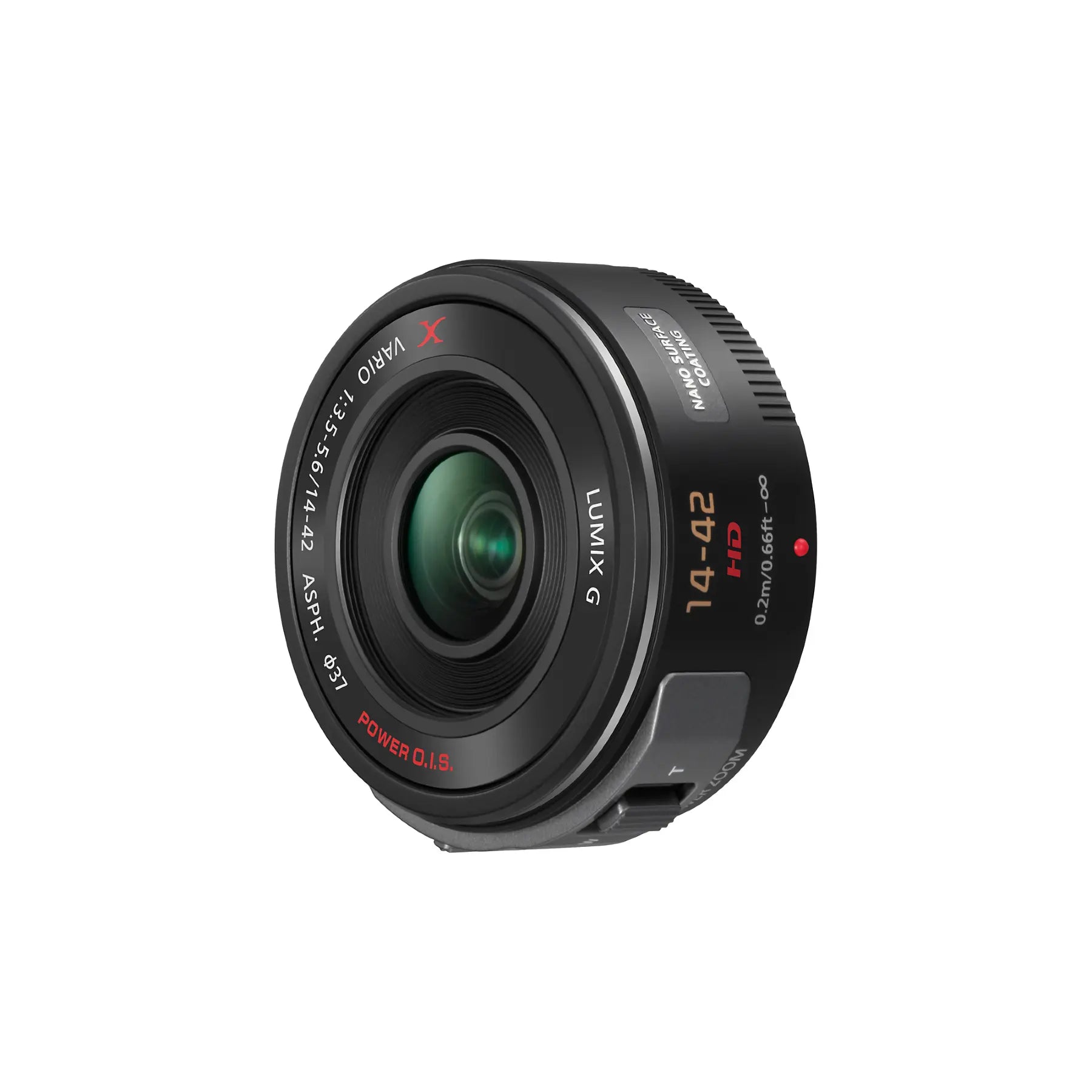Product Description
Panasonic Lumix G Vario PZ 14-42mm Interchangeable Lens: Compact Power and Precision
The Panasonic Lumix G Vario PZ 14-42mm f/3.5-5.6 ASPH POWER O.I.S. Lens is a cutting-edge interchangeable lens designed for the Micro Four Thirds system, offering a versatile zoom range of 28-84mm in full-frame equivalent. Part of Panasonic's premium "X" lens brand, this lens delivers outstanding image quality, portability, and convenience. With electric-powered zoom for smooth operation and Nano Surface Coating for exceptional clarity, this lens is perfect for photographers and videographers looking for high performance in a compact form.
Key Features:
- 14-42mm Focal Length (28-84mm equivalent): Versatile zoom range for a variety of shooting scenarios
- Electric-Powered Zoom: Smooth and precise zoom control, ideal for video and still photography
- POWER O.I.S. (Optical Image Stabilizer): Reduces blur from camera shake for sharper images
- Nano Surface Coating: Minimizes ghosting and flaring for clear, high-contrast images
- Compact and Lightweight: Retractable design with only 26.8mm in length and 95g in weight
- 9 Elements in 8 Groups: Includes 4 aspherical and 2 ED elements for superior image quality
- Stepping Motor for Fast, Silent AF: Supports high-speed autofocus and quiet operation, perfect for video
Compact, Powerful Zoom Lens for Every Situation
The Panasonic Lumix G Vario PZ 14-42mm lens offers an extremely portable solution for photographers who need flexibility without sacrificing performance. With its 14-42mm zoom range, this lens covers everything from wide-angle landscapes to close-up portraits, making it ideal for daily shooting, travel, and street photography. The electric-powered zoom ensures smooth, precise zoom control, perfect for both stills and video.
High-Quality Optics for Exceptional Clarity
Engineered with 9 elements in 8 groups, including 4 aspherical lenses and 2 ED lenses, this lens minimizes distortion and chromatic aberrations, delivering high-quality images with excellent contrast across the entire zoom range. The Nano Surface Coating further enhances image clarity by reducing reflections, ghosting, and flare, even when shooting in challenging lighting conditions.
POWER O.I.S. for Steady Shots
The lens features POWER O.I.S. (Optical Image Stabilizer), which compensates for camera shake, ensuring sharper, blur-free images, especially when shooting handheld or in low-light situations. This advanced stabilization technology is perfect for capturing clear, high-resolution images without the need for a tripod.
Fast, Silent Autofocus for Photo and Video
Equipped with a stepping motor and inner focus system, the Panasonic Lumix G Vario PZ 14-42mm lens delivers fast, precise, and quiet autofocus performance. This makes it ideal for video recording, where smooth, silent operation is essential. When paired with LUMIX G cameras, the lens achieves Light Speed AF in just 0.1 seconds, ensuring you never miss a shot.
Ultra-Portable Design for Maximum Mobility
Despite its versatile zoom range, the Panasonic Lumix G Vario PZ 14-42mm is impressively compact, retracting to just 26.8mm in length and weighing only 95g. This makes it one of the most portable zoom lenses available, perfect for photographers who need maximum mobility without compromising on image quality.
For full specifications click Here
Payment & Security
Your payment information is processed securely. We do not store credit card details nor have access to your credit card information.



















